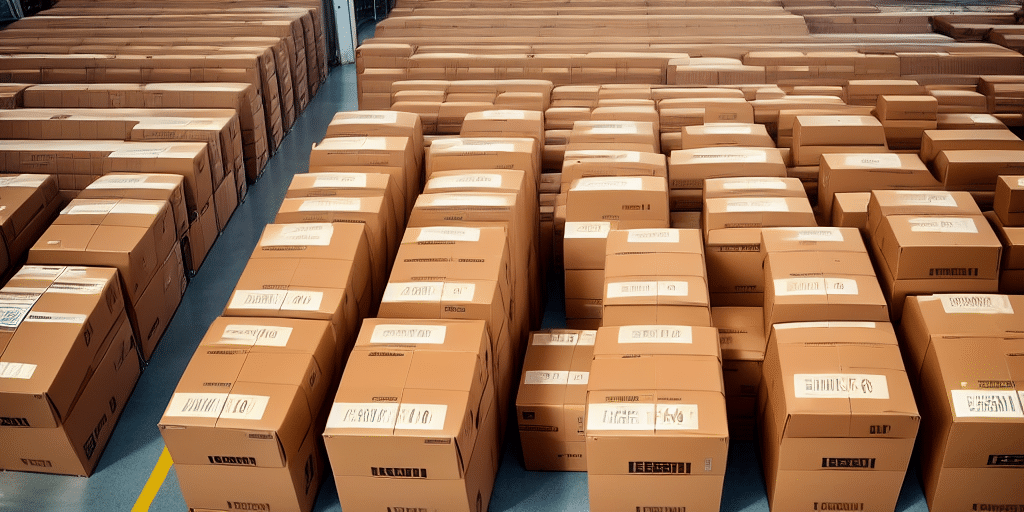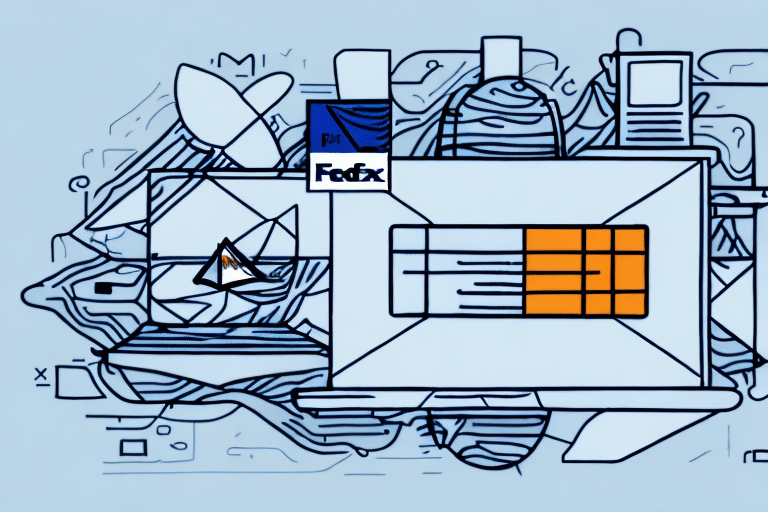Common Reasons for Late UPS Deliveries
Understanding why your UPS package is delayed can help mitigate future issues and set realistic expectations for delivery times. Several factors contribute to late deliveries, some within UPS’s control and others not.
Incorrect or Incomplete Delivery Addresses
A primary reason for delayed UPS deliveries is incorrect or incomplete delivery addresses. Missing details such as apartment numbers, street suffixes, or accurate city/state/zip codes can cause packages to be rerouted or returned to the sender.
Failed Delivery Attempts
If the recipient is unavailable to receive the package, UPS drivers will make multiple delivery attempts. Depending on the selected UPS shipping option, there may be specific timeframes or signature requirements that, if unmet, result in delays.
Package Weight and Size
Heavy or oversized packages require additional handling and transportation resources, potentially causing delays. Ensuring that your package complies with UPS size and weight restrictions can help prevent such issues.
Weather Conditions and Natural Disasters
Extreme weather events like hurricanes, snowstorms, or floods can disrupt transportation routes and halt delivery services temporarily. During such times, UPS may need to reroute packages, leading to unexpected delays.
Customs Clearance for International Shipments
International shipments are subject to customs clearance procedures, which can be time-consuming. Issues with documentation or package contents can prolong clearance times. Utilizing UPS’s tracking system allows customers to monitor their package’s progress and anticipate potential delays.
The Impact of High Package Volumes on UPS Delivery Times
During peak seasons, such as holidays or special sales events, the volume of packages increases significantly. This surge can strain UPS’s resources, leading to longer delivery times.
Seasonal Peaks and Holidays
Events like Black Friday, Cyber Monday, and the holiday season see a substantial rise in package volumes. Limited staffing and increased demand can result in delayed deliveries.
Urban Delivery Challenges
Delivering to densely populated areas poses challenges like limited parking and heavy traffic, extending delivery times. Planning delivery routes efficiently is crucial to mitigating these delays.
Pandemic-Related Delays
The COVID-19 pandemic heightened online shopping trends, increasing package volumes and placing additional stress on UPS’s logistics network. Although improvements have been made, residual effects can still influence delivery times.
How Weather and Natural Disasters Affect UPS Deliveries
Unpredictable weather patterns and natural disasters can severely impact UPS’s delivery operations.
Transportation Disruptions
Severe weather conditions can make roads impassable or dangerous, forcing UPS to reroute delivery trucks. This not only delays deliveries but also increases operational costs.
Safety Prioritization
In emergencies, UPS prioritizes the safety of its drivers and the public. Suspension of delivery services in affected areas is a necessary measure to prevent accidents and ensure human safety.
Technological Solutions for Adverse Conditions
UPS employs advanced technologies like GPS tracking and route optimization tools to navigate disruptions caused by weather or disasters, striving to maintain delivery schedules as much as possible.
Delays in Customs: Effects on International Shipments
International shipments face additional challenges that can lead to delays.
Documentation Issues
Incorrect or incomplete customs documentation can hold up packages at borders. Ensuring all necessary paperwork is accurately completed is essential for timely international deliveries.
Customs Inspections and Fees
Packages may be subjected to random inspections, which can extend transit times. Additionally, unexpected customs fees can cause transactions to stall.
Mitigating Customs Delays
Using UPS’s customs brokerage services can help navigate the complexities of international shipping, reducing the likelihood of delays.
The Role of Routing and Transit Times in Late UPS Deliveries
Efficient routing and accurate transit times are critical for timely deliveries.
Route Optimization
UPS utilizes sophisticated algorithms to determine the most efficient delivery routes. However, unforeseen factors like traffic jams or road closures can disrupt these plans.
Transit Time Estimates
Transit time estimates are based on historical data and current conditions. Real-time issues can cause actual delivery times to diverge from estimates.
Address Accuracy
Providing a precise and complete delivery address is vital. Inaccurate addresses lead to misrouting, extending delivery times.
Understanding the UPS Tracking System
Keeping track of your package’s journey is made easy with UPS’s comprehensive tracking system.
Real-Time Updates
The UPS tracking system offers real-time updates on your package’s status, including departure, arrival, and customs processing stages.
Notifications and Alerts
Users with a My UPS account can set up email or text alerts to receive notifications about their package’s progress and any potential delays.
Locating Your Package
Knowing the exact location of your package allows for better coordination, especially if you need someone else to receive it on your behalf.
Handling Lost, Stolen, or Damaged Packages
Despite best efforts, packages can sometimes be lost, stolen, or damaged during transit.
Reporting Issues
Immediate reporting to UPS customer support is crucial. Provide all relevant details and documentation to facilitate a swift resolution.
Compensation and Remedies
Depending on the situation, you may be eligible for reimbursement or insurance claims. Familiarizing yourself with UPS’s policies can expedite this process.
Preventative Measures
Utilizing tracking features and delivery notifications can help monitor your package’s status, reducing the risk of unnoticed losses or damages.
Effective Communication with UPS for Support
Clear and prompt communication with UPS can resolve many delivery issues efficiently.
Contacting Customer Support
UPS offers multiple channels for support, including phone, email, and live chat. Reaching out through your preferred method ensures timely assistance.
Utilizing Online Resources
The UPS website provides a wealth of information, from tracking tools to FAQs, enabling customers to find solutions independently.
Social Media and Automated Support
UPS’s social media platforms and automated support options offer additional avenues for quick problem-solving and updates.
Selecting the Right UPS Delivery Option
Choosing the appropriate shipping method can greatly influence delivery times and costs.
Same-Day and Next-Day Shipping
For urgent deliveries, UPS offers same-day and next-day shipping options. While more expensive, these services ensure rapid delivery.
Standard Shipping
If time is less of a concern, standard shipping provides a cost-effective alternative without compromising reliability.
Customized Shipping Solutions
UPS provides tailored shipping solutions for businesses and individuals with specific needs, enhancing flexibility and efficiency.
The Future of UPS Deliveries: Technological Advancements
UPS is at the forefront of integrating advanced technologies to enhance delivery efficiency and reliability.
Autonomous Delivery Vehicles
UPS is developing autonomous vehicles to streamline delivery processes, reduce human error, and increase delivery speed.
Artificial Intelligence and Machine Learning
AI and machine learning are employed to optimize routing, predict potential delays, and improve overall logistics management.
GPS and Route Optimization Tools
Advanced GPS technology assists in real-time route adjustments, ensuring packages reach their destinations promptly despite unforeseen challenges.
Conclusion: Strategies to Prevent Late Deliveries and Ensure Smooth Shipping
While certain factors affecting UPS deliveries are beyond control, proactive measures can significantly reduce the likelihood of delays.
- Verify Delivery Information: Double-check addresses and contact details to prevent misrouting.
- Monitor Package Status: Utilize UPS’s tracking system to stay informed about your package’s journey.
- Select Appropriate Shipping Options: Choose delivery methods that align with your time sensitivity and budget.
- Plan Ahead: Anticipate peak seasons and adverse weather conditions to allow extra time for deliveries.
- Promptly Address Issues: Report any delays, damages, or discrepancies immediately to facilitate quick resolutions.
By implementing these strategies and staying informed, you can enhance the reliability of your UPS shipments and ensure a smoother shipping experience.




















